Spring cleaning was yesterday, today it's autumn cleaning - we'll show you what you should do to prepare your garden for winter.

Sweep leaves, shape the lawn or the first Prepare plants for wintering – there is a lot to do in the garden in autumn. But the autumn cleaning not only ensures a tidy appearance, but also prepares the garden for the harsh winter. So that your garden can withstand the cold temperatures in the best possible way, we will tell you which ten tasks you should definitely do in autumn.
contents
- Autumn cleaning in the garden: You should keep these ten tips in mind
- 10. Autumn cleaning tip: wood care
- 9. Autumn cleaning tip: Cut off the edges of the lawn
- 8. Autumn cleaning tip: Lawn care and fertilization
- 7. Autumn cleaning tip: get hedges in shape
- 6. Autumn cleaning tip: Prepare rose beds
- 5. Autumn cleaning tip: Protect sensitive plants
- 4. Autumn cleaning tip: clean gravel paths
- 3. Autumn cleaning tip: bring perennials into shape
- 2. Autumn cleaning tip: use autumn leaves properly
- 1. Autumn cleaning tip: From leaves to compost
Autumn cleaning in the garden: You should keep these ten tips in mind
Even if the garden is a bit more work now, next spring the autumn cleaning will have been worthwhile and you will be spared a lot of work.
10. Autumn cleaning tip: wood care
Wind and weather affect our wood all year round, but the conditions are extremely unfavorable, especially in winter. So that fences, furniture and garden sheds can still survive wet and frost, autumn is exactly the right time for a new protective coat. Glazes, varnishes or care oils give the wood the necessary resilience to withstand bad weather without damage. However, when painting, make sure that the wood is completely dry and remove dirt, old paint residues or greasy films from the wood beforehand. Whether you work with varnish, glaze or paint is usually a matter of taste, because all materials (when used correctly) provide sufficient protection. Only the brush is a must - since wooden objects in the garden usually have a coarser surface, a smooth foam roller would not sufficiently work in the protective substances.

9. Autumn cleaning tip: Cut off the edges of the lawn
Before your lawn goes into the well-deserved winter break, it should get your attention once more. The edges of the lawn in particular should now be cut off, otherwise the lawn will soon spread in flower beds or in the vegetable garden. The "English lawn edge" works best with an edge cutter, which cuts off a narrow piece of the lawn with a sharp blade. You can later remove this from the bed with a spade. For long, straight pieces, it is worth stretching a line or using a long lath as a template use: The edge is guaranteed to be clean and you don't get annoyed about curves and uneven ones Distances. Finally, the remaining root suckers should be severed with a cultivator or cultivator - this way you have peace until spring.
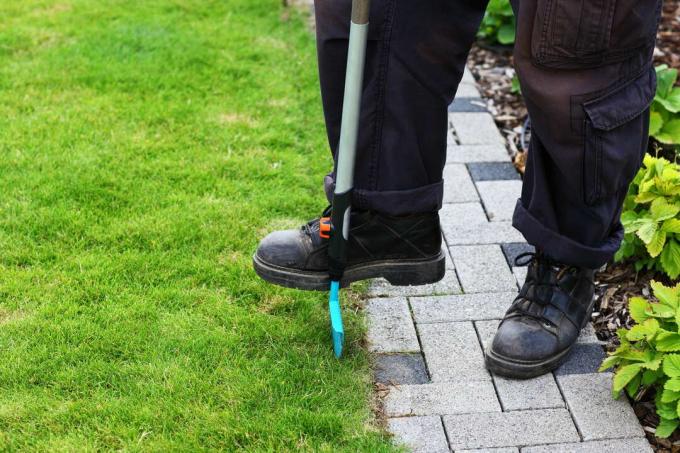
8. Autumn cleaning tip: Lawn care and fertilization
But not only the lawn edges require special care in autumn: the rest of the lawn also needs to be well prepared for the winter. Especially after hot, dry summers, the lawn has often suffered and appears withered, brown and with unsightly bare spots. In addition to sufficient water, an autumn lawn fertilizer like ours should be used Plantura Organic Autumn Lawn Fertilizer used to prepare the lawn for the coming winter. The nutrients it contains provide the lawn with the best possible care and help it regain its old strength. In addition, autumn lawn fertilizer contains a lot of potassium, which acts like a natural antifreeze and thus creates the best conditions for overwintering. As your Fertilize the lawn in the fall, find out here.

Even scarify helps the lawn by removing unwanted competitors such as moss or weeds. Bald spots should be sown again, if you still have pieces of the lawn edge, you can use them and let them grow.
7. Autumn cleaning tip: get hedges in shape
Hedges can be found in almost every garden, after all they not only look good but also protect us from prying eyes. Unfortunately, many hedges quickly look unkempt: especially deciduous, hardy deciduous trees such as field maple, hornbeam or common beech put on enormous growth again in late summer Day. Luckily, you can easily prune the shrubs again in autumn and thus ensure more order in your garden. In fact, an autumn cut even has some advantages: on the one hand, there is less clippings due to the less leafy branches, on the other hand there is no risk of brooding birds driven from their nesting sites. If you want to carry out a radical pruning, you have to wait until October anyway: before that is the strong pruning Prohibited by law to protect animals. To ensure that the plants continue to grow well after the cut, you should also take the weather into account - dry days with overcast skies are ideal, but it should not freeze.

6. Autumn cleaning tip: Prepare rose beds
Even the queen of flowers has to be called to order in autumn, because over the summer, densely planted rose beds often form intertwined twigs. In order to put a stop to this chaos, it makes sense to cut all new shoots by about a third and remove fallen leaves and twigs from the bed. Careful attention should be paid to the disposal of old leaves, especially in the case of an infestation with blackspot. otherwise the fungal spores can overwinter on the leaves and attack the new leaves next year. Weeds should also be removed from the bed in order to optimally prepare the roses for the winter. With a rose fork or a cultivator, the soil is thoroughly loosened again and then heaped up on the stem of the rose. In the case of grafted roses, it is important that the grafting area is also covered, as this is very sensitive. In addition, you can cover the bed with pine brushwood to protect it from severe frosts.
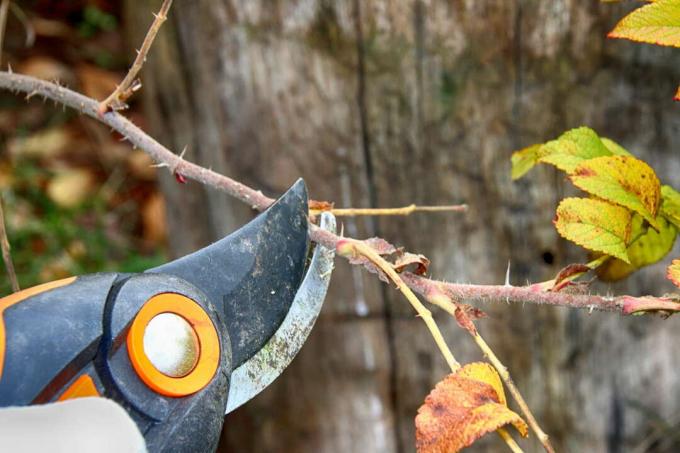
5. Autumn cleaning tip: Protect sensitive plants
In autumn it is time to protect the sensitive plants from the first severe frosts. Some plants, such as geraniums (pelargonium) or citrus plants (citrus), don't like the German winter at all and should rather spend the winter indoors. Other plants such as magnificent candles (Gaura) actually endure the cold temperatures well if they get a little help. Particularly moist soil in combination with severe frost make things difficult for the plant. Luckily, a mulch layer of leaves combats both problems at the same time: on the one hand, the soil is insulated, on the other hand, rainwater is drained away from the leaves to the outside. Also hardy potted plants like cherry laurel (Prunus laurocerasus) or boxwood (Buxus sempervirens) can hibernate outside - only their pot should be covered with fleece or polystyrene, otherwise it will freeze through too quickly.
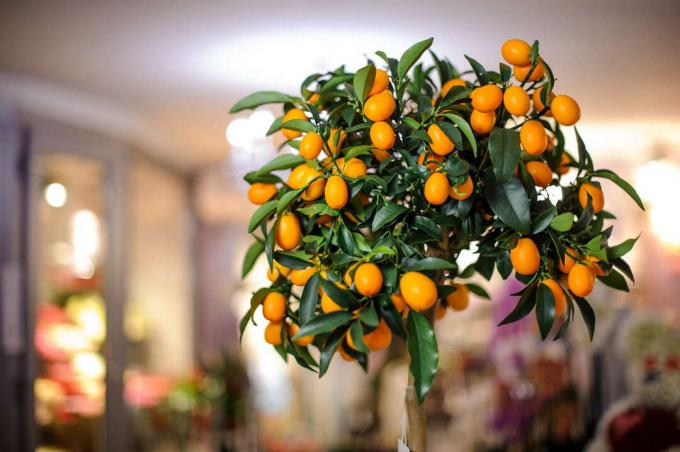
4. Autumn cleaning tip: clean gravel paths
Even gravel paths are not spared from leaves in autumn and have to be cleaned. But the careful cleaning of your path not only brings order to the garden - autumn cleaning also ensures clean paths in the long term. If the leaves remain in the gravel over the winter, humus will slowly form between the gravel and grit, which is an ideal breeding ground for weeds and is difficult to remove from the gravel can. This is why even professionally laid gravel paths should be cleared of leaves and plant debris in autumn in order to remain weed-free in the long term. This is best done in dry weather and with a leaf blower: the dry leaves are blown aside by the outflowing air and only the clean gravel remains.

3. Autumn cleaning tip: bring perennials into shape
There is always something going on in the perennial bed: the perennial plants often develop a life of their own over the course of the year and some spread while others gradually disappear. Autumn is therefore exactly the right time to intervene and put things back in order. Plants that have grown too much can be divided or removed entirely and replaced by plants that are less vigorous. Older perennials can also benefit from a division and then bloom significantly more and more vigorously in spring. In any case, diseased plants should be removed immediately - if they were left in the bed over the winter, the disease could spread to other plants and infect them.
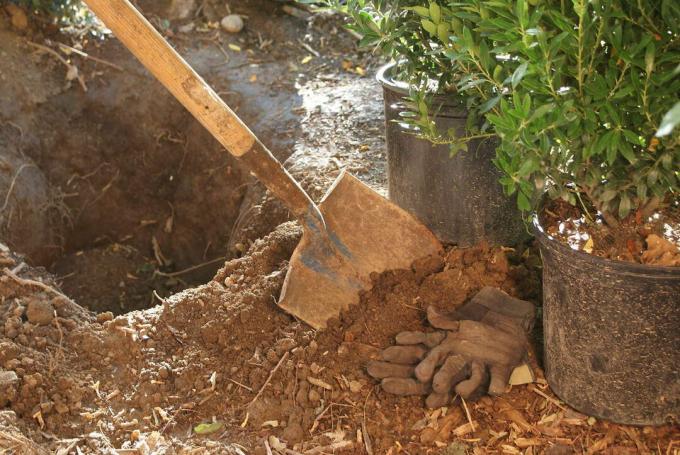
2. Autumn cleaning tip: use autumn leaves properly
In autumn, no garden owner can complain about too few leaves. But the colorful leaves are not just extra work, they can even be really useful. For example, as already mentioned, leaves can be used as natural frost protection for sensitive plants. But you can also do animals in the garden a favor with the leaves: in a quiet corner of the garden, a pile of leaves offers a great winter quarters for hedgehogs.
More ideas and tips for using Autumn leaves in the garden can also be found in this article.
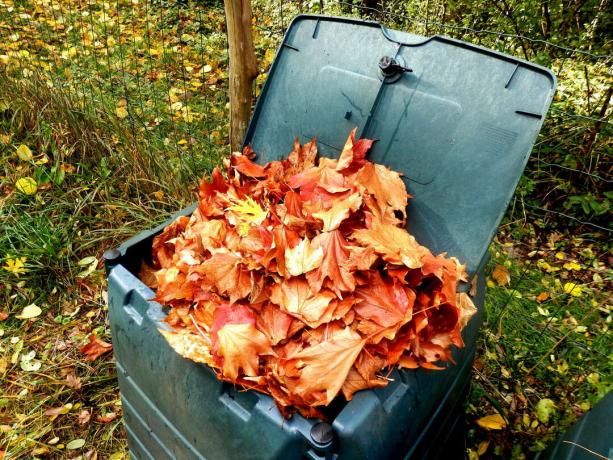
1. Autumn cleaning tip: From leaves to compost
There is another way to continue using the foliage in the fall: it is easy to do from this and gain valuable humus for free, which provides a perfect nutrient basis for many plants. Since the domestic composter is sufficient for the amount of leaves in larger gardens, there is a simple trick to building your own compost bin. To do this, simply take a piece of rectangular wire mesh and form it into a cylinder by connecting the beginning and end. Set up in a shady place, the leaves can now be filled in, compost accelerator is mixed in in layers. Without further action, this container will produce good leaf compost within a year, which is well suited for soil improvement.
notice: The more natural your garden is, the more insects and other creatures feel at home in it. We therefore recommend that you don't take things too seriously when it comes to tidiness in the garden. If you still want to do more Garden animals in winter support, take a look at this article.
Of course, the classic garden animals also include lots of wild birds. These can also be supported with a natural garden - but also by offering birdseed. Especially in the cold winter months, you can actively support the wild bird populations by offering a feeding station. Our Plantura litter for example, offers species-appropriate, high-energy ingredients that help a variety of garden birds through the harsh winter.



